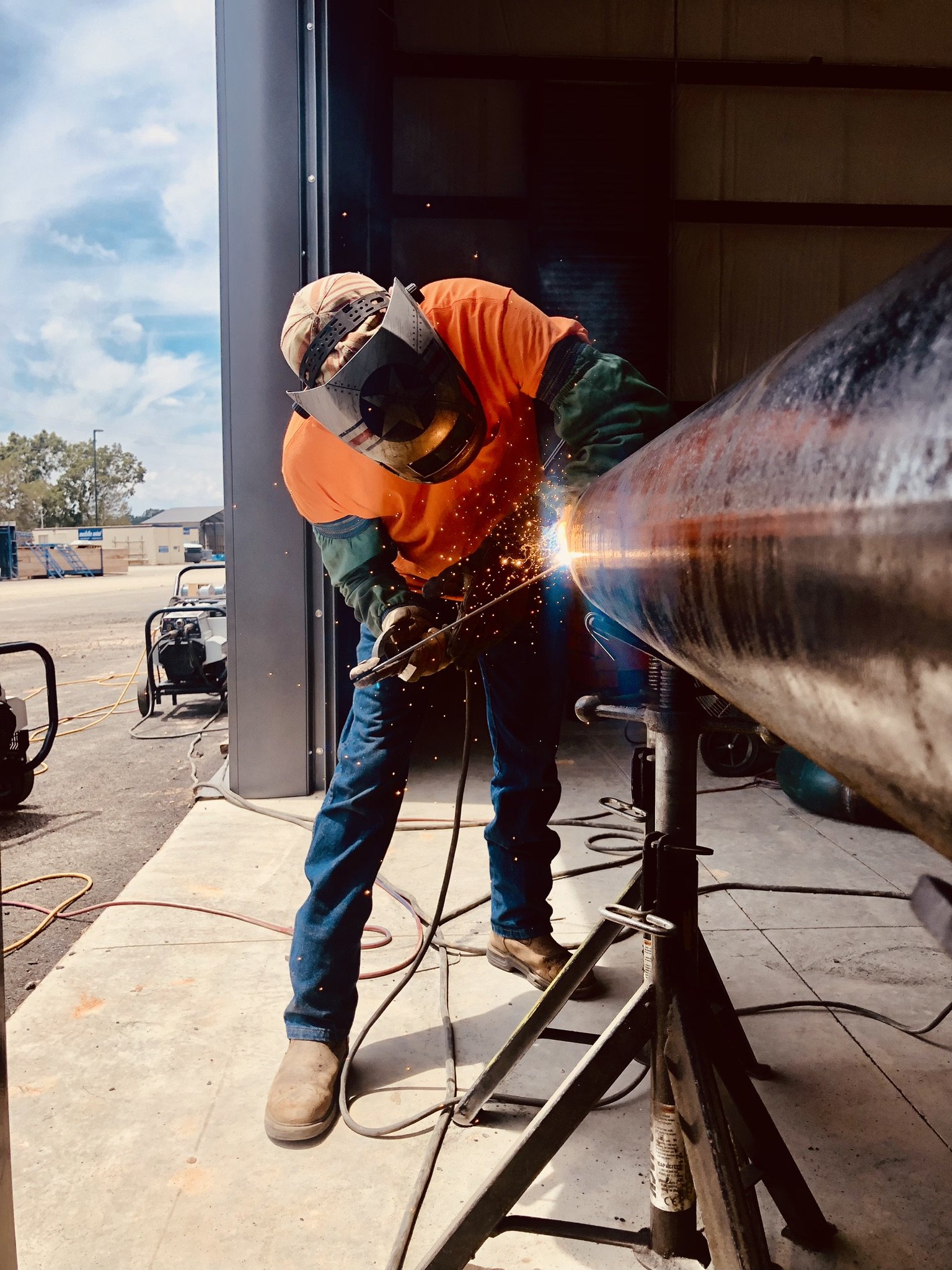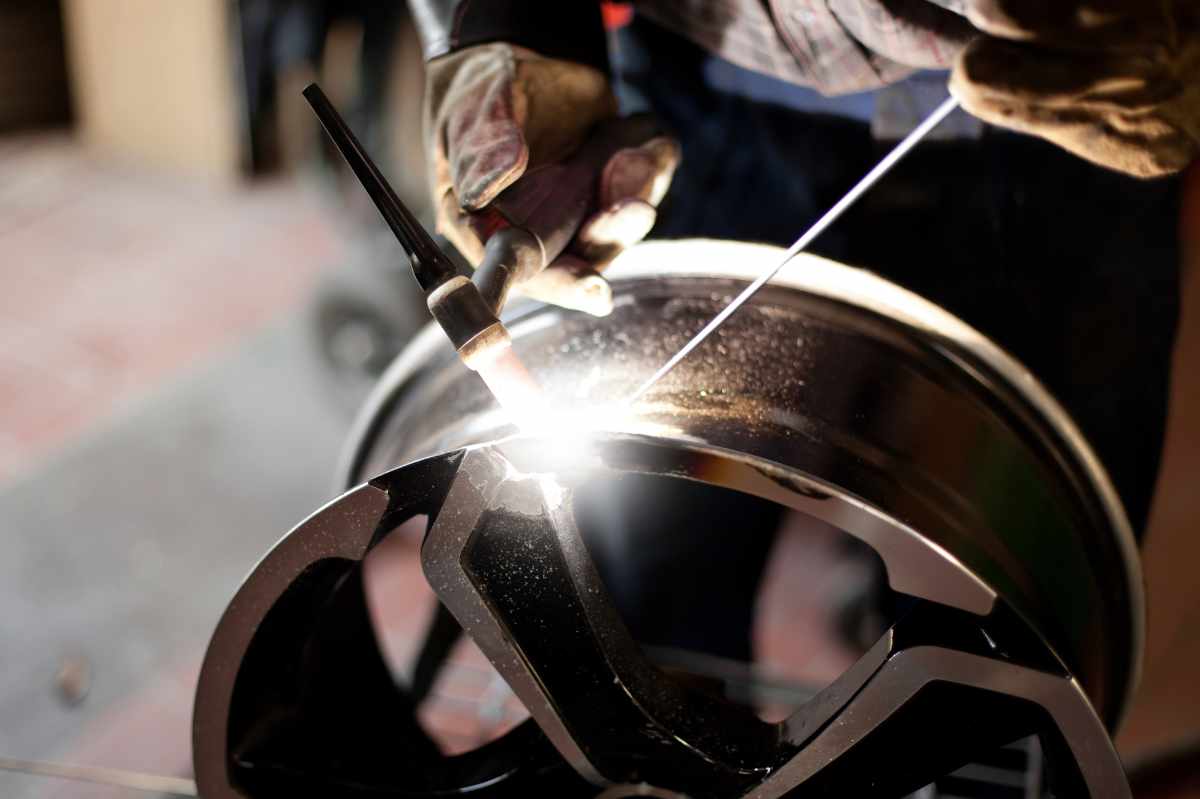All Concerning Welding: Secret Insights Into Techniques and Ideal Practices for Success
Welding encompasses a range of strategies, each fit for details materials and applications. Understanding these techniques, such as GMAW, SMAW, and TIG, is necessary for accomplishing suitable outcomes. The appropriate tools and security practices can not be ignored. As preparation and troubleshooting play crucial duties in the welding procedure, mastering these elements can considerably improve the top quality of the final product. What are the crucial factors that guarantee an effective weld?
Comprehending Different Welding Methods
Welding strategies encompass a selection of methods, each suited to details applications and products. Among the most common methods are Gas Metal Arc Welding (GMAW), Shielded Steel Arc Welding (SMAW), and Tungsten Inert Gas Welding (TIG) GMAW, additionally called MIG welding, is popular for its speed and flexibility, making it optimal for slim products. SMAW, or stick welding, is favored for its simplicity and performance in outside environments, specifically with thicker metals. TIG welding offers accuracy and control, making it suitable for elaborate work and non-ferrous steels (Belgrade Welding). Each technique has its special benefits and considerations, enabling welders to pick the finest approach based on the task's requirements, product type, and desired end results. Understanding these methods is essential for successful welding
Essential Welding Devices and Devices
While numerous welding strategies call for specific abilities, the best devices and devices are equally vital for attaining quality results. Necessary welding devices consists of welding machines, which vary relying on the strategy-- such as MIG, TIG, or stick welding. Safety equipment, including aprons, safety helmets, and gloves, warranties safety and security and convenience during the process. Additionally, clamps and components assist secure products in area, making sure precision in welds. Consumables like welding poles, cable, and securing gas are additionally critical elements that affect the top quality of the weld. In addition, devices such as cutters and grinders promote surface area preparation and post-weld ending up, adding to a professional outcome. Purchasing top quality equipment ultimately boosts the performance and effectiveness of welding tasks.
Safety And Security Practices in Welding
Correct safety and security methods are crucial in the welding sector to secure workers from possible hazards. Welders must use proper individual safety tools (PPE), consisting of safety helmets with appropriate shading, handwear covers, and flame-resistant clothing. Sufficient air flow is crucial to lower exposure to harmful fumes and gases generated throughout the welding procedure. Furthermore, workers should be educated in the proper handling of welding tools to avoid mishaps. Fire precaution, such as maintaining flammable materials away from the welding location and having fire extinguishers easily offered, are necessary. Regular inspections of tools and work areas can help determine possible dangers prior to they lead to accidents. By adhering to these security techniques, welders can create a safer working atmosphere and minimize risks associated with their profession.
Preparing Products for Welding
Preparing products for welding is a crucial action that greatly influences the quality and stability of the final product (Montana Mobile Welding and Repair Fabrication). Correct prep work includes cleaning up the surfaces to remove impurities such as rust, oil, and dirt, which can endanger the weld. Techniques such as grinding, fining sand, or utilizing solvents are frequently employed to achieve a clean surface. In addition, making certain that the products mesh comfortably is necessary; gaps can lead to weak welds. It's also vital to take into consideration the alignment and positioning of the components, as this will impact the convenience of welding and the final outcome. Selecting the appropriate filler product and ensuring compatibility with the base metals is essential for achieving solid, long lasting welds.
Tips for Getting High-Quality Welds
Attaining top notch welds requires focus to information and adherence to finest practices throughout the welding procedure. Proper joint preparation is essential, ensuring surfaces are cost-free and tidy from pollutants. Choosing the appropriate filler product and welding method based on the base steels is critical for excellent bonding. Preserving regular travel speed and angle while welding can protect against issues and advertise uniformity. In addition, controlling heat input is crucial; too much warm can lead to bending and weakened joints. If necessary, regularly evaluating the welds throughout the process permits for prompt modifications. Ultimately, using appropriate post-weld treatments, such as cleaning and stress and anxiety relief, can improve the toughness and stability of the weld, eventually ensuring a successful end result.
Repairing Common Welding Issues
Welding commonly offers challenges that can influence the top quality and honesty of the last product. Common problems such as porosity, inconsistent weld grains, and overheating can occur, each requiring certain repairing methods. Comprehending these issues is important for welders to enhance their abilities and accomplish optimal results.
Porosity Issues Discussed
Although porosity can frequently be forgotten, it continues to be a critical concern in welding that can compromise the honesty of an ended up product. Porosity describes the presence of little gas pockets within the weld grain, which can weaken the joint and lead to early failure. This trouble usually arises from contaminants, wetness, or inappropriate shielding gas insurance coverage throughout the welding procedure. To reduce porosity, welders ought to confirm that the base materials are dry and tidy, use appropriate shielding gases, and keep regular welding criteria. Frequently checking the devices and setting can also aid recognize potential concerns prior to they materialize in the weld. Dealing with porosity properly is essential for achieving solid, resilient welds that meet top quality criteria.

Irregular Weld Beads
Inconsistent weld grains can significantly impact the quality and toughness of a finished item. Numerous elements add to this problem, consisting of inappropriate traveling rate, incorrect amperage settings, and inconsistent electrode angles. When the welder relocates too quickly, a grain might appear narrow and lack infiltration, while relocating also slowly can trigger excessive buildup. In addition, making use of the wrong amperage can lead to either recommended you read damaging or extreme spatter, both of which compromise weld integrity. The welder's method, such as irregular torch activity, can likewise lead to irregular grain look. To alleviate these problems, welders ought to concentrate on maintaining consistent, controlled motions and making certain proper devices settings to accomplish uniformity in their welds. Uniformity is crucial to attaining trusted and strong welds.
Overheating and Bending Issues
Extreme warm throughout the welding process can bring about considerable overheating and buckling concerns, influencing the structural integrity of the workpiece. These problems typically materialize as distortion, which can endanger alignment and fit-up, making additional setting up challenging. Factors adding to overheating consist of the selection of welding parameters, such as voltage and take a trip speed, in addition to the sort of material being welded. To minimize these issues, welders ought to preserve consistent travel rate and proper warm input while monitoring the work surface temperature level. In addition, pre-heating or post-weld heat therapy can help ease stresses triggered by fast air conditioning - Montana Mobile Welding and Repair Belgrade Welding. Routine inspection and adherence to ideal practices are vital in preventing overheating and making sure the pressure welding durability and dependability of welded structures
Frequently Asked Questions
What Are the Profession Opportunities in the Welding Sector?
The welding sector provides diverse profession chances, consisting of placements as welders, inspectors, designers, and teachers. Professionals can operate in production, building and construction, aerospace, and auto industries, benefiting from solid demand and affordable incomes in different roles.
How Can I Enhance My Welding Rate Without Sacrificing Quality?
To enhance welding speed without sacrificing top quality, one must practice effective techniques, keep devices, optimize settings, and enhance hand-eye sychronisation. Routine training and seeking comments can also significantly add to achieving much faster, top notch welds.
What Accreditations Are Readily Available for Welders?
Numerous certifications exist for welders, including those from the American Welding Society (AWS), the National Center for Building Education And Learning and Research Study (NCCER), and various industry-specific organizations. These qualifications boost employability and demonstrate ability efficiency.
Exactly How Does Welding Influence the Residences of Metals?
Welding influences the buildings of metals by changing their microstructure, which can lead to modifications in ductility, hardness, and toughness. Warmth input and air conditioning prices during the procedure greatly impact these material characteristics.
Can I Bonded Dissimilar Metals With Each Other?
